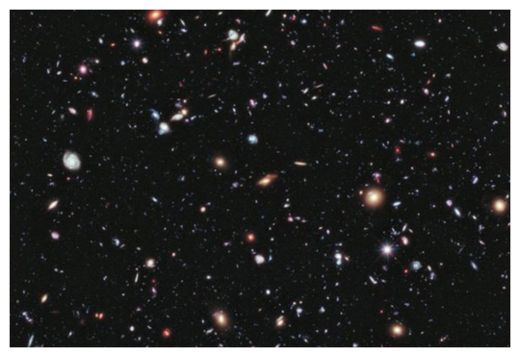
Rodger Thompson, a University of Arizona astronomy professor, disclosed his findings Wednesday at the American Astronomical Society (AAS) meeting in Long Beach, California. He argues that dark energy theories, which have emerged as variations on Einstein's theory of general relativity, do not support newly obtained results on the relative masses of protons and electrons during the earliest stages of the Universe.
He computed the ratio predicted by dark energy models, a hypothetical form of energy believed to be found throughout space, and found that these theories (which add a scalar field to Einstien's equations to account for the acceleration o the Universe) did not fit the new data. Thompson's findings "impact our understanding of the universe and point to a new direction for the further study of its accelerating expansion," the university said in a recent statement.
In work that was honored with the 2011 Nobel Prize in Physics, researchers demonstrated that the expansion of the universe was speeding up, not slowing down, as had previously been thought. That acceleration could be accounted for by reinstating the "cosmological constant" into Einstein's theory of General Relativity - originally introduced by Einstein to balance the expansion predicted by his original equations, as he believed at the time that the Universe was static.
"The constant was reinstated with a different value that produces the observed acceleration of the universe's expansion. Physicists trying to calculate the value from known physics, however, get a number more than 10 to the power of 60 (one followed by 60 zeros) too large - a truly astronomical number," the institution's communications department said. "That's when physicists turned to new theories of dark energy to explain the acceleration."
"In his research, Thompson put the most popular of those theories to the test," they said.
He focused on the value of a fundamental constant derived from the ratio of the proton and electron masses - a pure number with no units attached to it. Such fundamental constants shape the laws of physics, meaning that if the values change, then those laws will also have to change, and if they change by large amounts, it would radically alter the entire universe.
"The new physics model of dark energy that Thompson tested predicts that the fundamental constants will change by a small amount," the university said. "Thompson identified a method of measuring the proton to electron mass ratio in the early universe several years ago, but it is only recently that astronomical instruments became powerful enough to measure the effect. More recently, he determined the exact amount of change that many of the new theories predict."
"Last month, a group of European astronomers, using a massive radio telescope in Germany, made the most accurate measurement of the proton-to-electron mass ratio ever accomplished and found that there has been no change in the ratio to one part in 10 million at a time when the universe was about half its current age, around 7 billion years ago," they added. "When Thompson put this new measurement into his calculations, he found that it excluded almost all of the dark energy models using the commonly expected values or parameters."



The Speed of Gravity
by Miles Mathis
[Link]
HOW DO PHOTONS TRAVEL?
by Miles Mathis
...
So, I have explained the motion of the photon in a simple manner, providing us with not only a spin but a rate of spin. I have developed actual numbers, first for the radius and mass of the photon, and now for the rate of spin and the tangential velocity and orbital velocity. I have shown how this spin rate creates the visible or measurable wavelength of light. The radius of the photon’s spin creates the actual wavelength, and then this length is stretched out by the linear motion, giving us the measured wavelength of the light.
But now we must move on to ask why and how photons express different wavelengths. Electromagnetic radiation, in the form of photons, comes in a wide range of wavelengths, as we know. How is this achieved? It is achieved by a wide variation of stacked spins. As I began to show in a previous paper, it turns out that photons can maintain a linear velocity very near c over a wide range of sizes. The photon does not reach a size limit that causes slowing until it approaches the spin radius just beneath the electron. At that limit, the largest photons begin absorbing the smallest photons, and the mass increase snowballs. This turns the nearly massless photon into the small-mass electron.
...
[Link]